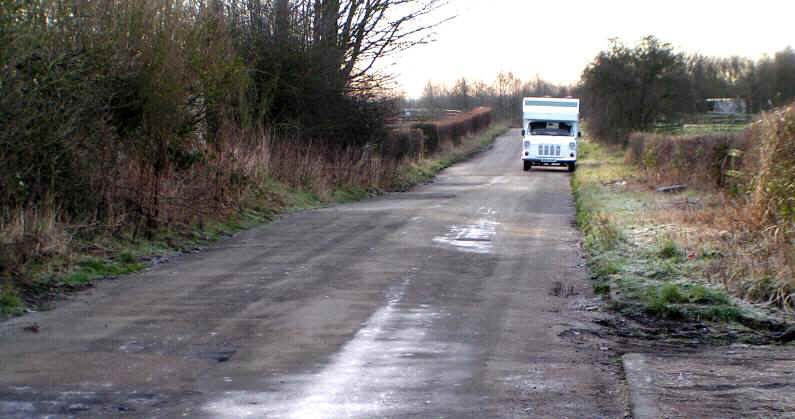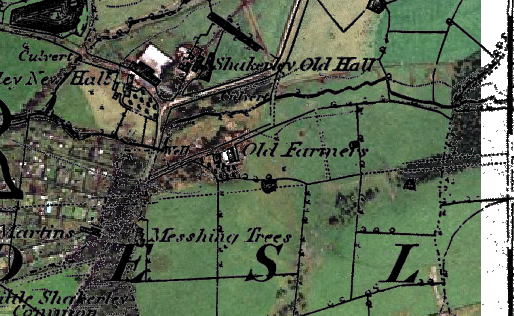| Viking experts are anticipating one of the
most important archaeological excavations in Britain following the discovery of what may
turn out to be the site of a 9th century boat burial. It follows the uncovering of a range
of artefacts by metal detector enthusiasts. Archaeologist Simon Holmes said: “If this
is indeed the case, it will be the first to be discovered in England and therefore one of
the most important Viking discoveries ever made in the British Isles. This find, which is
being kept secret and under guard, is extremely significant and will increase our
understanding of what the Vikings were doing here in Yorkshire in the late 9th
century.” The collection of items discovered, which includes silver coins,
fragments of two swords, weights, a belt buckle and strap ends, has gone on display for
the first time at the Yorkshire Museum, York, during the city's Viking Festival.
The metal detector enthusiasts found the trove in a ploughed riverside field in
December 2003 and, following the regulations designed to protect archaeological sites,
reported it immediately to Mr Holmes.
Treasure Trove
Last month the 130 items were reported to the national Portable Antiquities Scheme and
so to the British Museum, who designated them as treasure trove. This means the finders,
who are remaining anonymous, will be paid full compensation. The hoard dates to the 9th
century, when burying leading figures in their longships was a high caste ritual. The
finds are typical of the personal treasures for use in the afterlife found in Scotland,
Ireland and mainland Europe but not previously in England. The hoard includes two silver
pennies minted by Alfred the Great, seven other silver pennies, part of a silver dirham
coin from Baghdad, swords, two sets of scales with weights, and a pile of small silver
ingots. A collection of clinch nails, used on Viking longships, is the strongest clue to a
ship burial. Mr Holmes said: “I believe this is a burial of a trader-warrior who,
when he wasn't fighting, was involved in commercial activities across the Viking
world.”
More Roman Road
Mark Hayward, our intrepid field researcher has been out and about
again, and has once more come up with some interesting sites for us to investigate.
Miller’s Lane
 | At
Miller’s Lane in Atherton, the Roman Road is shown quite prominently on the 1849 6” OS map crossing the lane at
90 degrees about half way down. Mark
has spotted a slight hump in the road at this point and also a distinctive bank in
the field on the east side. This extends for about 20m or so before disappearing under a
mound of colliery pit waste. However, this field appears not to have been cultivated for a
good number of years, so maybe is an ideal candidate for a resistivity survey or even
excavation. |

Shakerley
Further east of this, just to the north of Tyldesley, the Road is shown on the OS map
crossing an old lane just south of Shakerley Old Hall. Sibson, writing in the early 19th
century, says “…it is very visible, where it crosses the narrow slip of
Little Shakerley Common. A short length of ridge and materials of Road, is here very
perfect.”
Again to the east of this lane the fields appear to be free of any development,
providing more scope for research.
Cleworth Hall
As we go further east, the Road appears to rise slightly northwards apparently avoiding
the hill to the east of Cleworth Hall, before turning south-east towards Moseley Common as
it makes its way to Manchester. Sibson describes the road here as “.. been
covered with a thick and broad coat of Blue Shale; which has become a belt of Blue Clay,
about a foot in thickness, and twelve yards in breath.”
This area north of Cleworth Hall, again appears untouched by recent development,
although 19th century mining operations may have caused some disturbance.
For those who are interest in pursuing the investigations further, a site visit will be
arranged at the next meeting.
Next Meeting (WAS)
Wednesday 3rd March at the BP Centre (Scout HQ) in Greenough Street, at 7.30 pm as
usual. This month’s speaker is Dr Robert Philpot from Liverpool Museum who will be
giving us a talk on Ancient Meols, a Sea-port on the Wirral.
Hope to see you there. B
|



